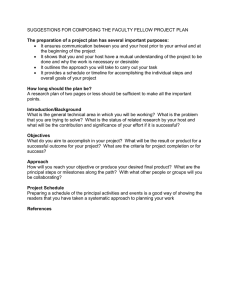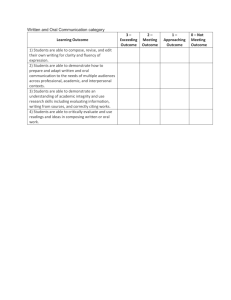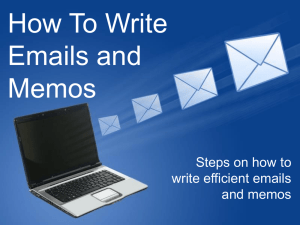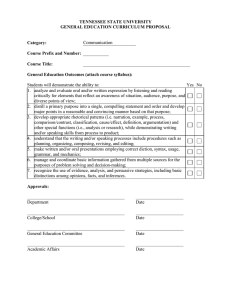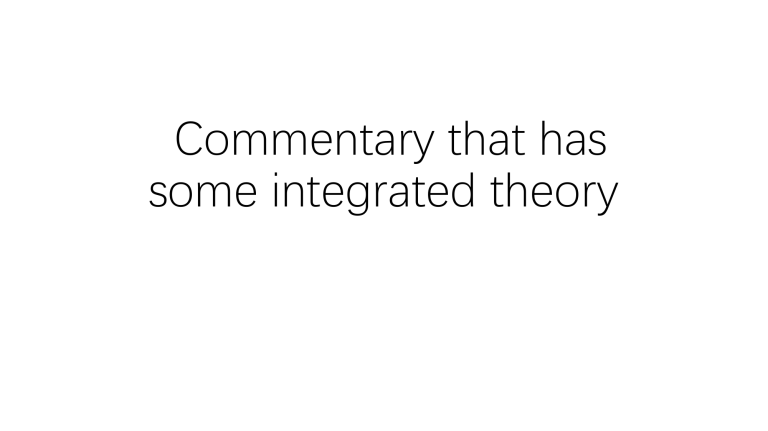
Commentary that has some integrated theory Contextualization Can we produce a more intuitive, more controlled, lower-threshold approach to composition allows everyone to have a good sense of control over the music they want to express? • What I want to explore is a new mode of composing that is different from traditional pen and paper composing and DAW based visual composing, In a way that essentially everyone can precisely control Contextualization “Composition just like walking”, This whole installation is designed to be full of this interactive concept . composing for me is like exploring a labyrinth, just choosing different paths to take, and I have made this idea completely tangible by using movement to compose. I have fleshed out my answers with the above-mentioned understanding of 'compositional sensibility' and this work is a combination of these ideas. “For the imitation of processes” “computer programmes can imitate natural factors” -The Oxford Handbook of Alogorithmic Music part II What Can Algorithms in Music Do I find the compositional process to be formally analogous to "walking". There are various concepts in composing: melodic superimpositions, transitions and Single variable Melodic unexpected progressions, which are route superimposition similar to those in walking: a single variable route, a pre-selection of a specific path, and a random selection of the path pre-selection Transitions to follow. Isn't it interesting to think in this path way! The process by which people decide/unconsciously walk on their own is Surprising random path progressions in fact the same as the process of composing music Brief Using the position information in unity, the information is then passed to MAX MSP using OSC, Use the location coordinate information to map with algorithm parameters to generate music, and create audio-visual art based on music. Three different parts • Music part • Audiovisual part (image) • Positional control part (I've written the details of the technique of Kinect and Unity integration in another separate PPT) Music part I started with a patch dedicated to create ambience music and music was recorded and used as music that constant change for the main project Then I designed melodies that can synthesis by walking elements such as position and acceleration, as well as random synthesised sounds and audio files that can be triggered • Inspired by fendoap https://fendoap.bandcamp.com/alb um/distarut-album1 What value does the aesthetics of the machine have “machine-generated music to have its own sense of form and proportion? Hard work experiments in psychology could be a breakthrough point" -The Oxford Handbook of Alogorithmic Music part II What Can Algorithms in Music Do • what I can do at this stage is to have a close integration of human experience, to provide an environment to recreate the feelings I had when composing, rather than having the machine generate music that can be perceived by humans How to generate an interactive piece of music that will be remembered? inverse analysis: by analyzing the rules of successful music in the past - Oxford Handbook of Music • I think the key is structure, and mechanism, and I think that the point at which people remember music, like all interesting things, is a particular form, as most contemporary music is investigating, the way pitch changes, the way time signatures are distributed, the way Composition worksI think it has something in common with the random rhythmic patterns that emerge in my work, how the movement patterns map out the changes in music, and the differences in pitch that set up the map at different locations • These are precisely the things that machines can help humans to achieve. • I think that the "rules" and "mechanisms" of an interactive installation are the perceptual form of the work, not the music or the sound itself, as a listener. The Map I made extensive use of switch and change objects to set up a fine set of maps, with different music changes corresponding to different parts of the map Randomly synthesised single tones based on position parameters Gradual change 3A 3B Gradual change 2A 2B 3 random melodies triggered when stepping over this line Gradual change 1A 1B Another 3 random melodies triggered when stepping over this line Positional control part • I have greatly simplified the process of controlling the music by interacting the sound board with the position changes, generating both musical and visual content from the simplest x,y axis parameters • I also connected the main changes in the background ambience sound to the groove object, so that there is a clear change in sound without the user not being able to feel the trend of the change, and all the parameters that affect the music are smoothed in a different way, without the problem of being led in a certain direction by a certain sound or needing to control the speed of movement, which is how I want to feel when making music, total freedom This is a way of composing The various parameters for ambience audio and trigger maps can be changed in the main patch, because I want people to think: "This is a way of composing" rather than a single performance. conclusion I think it's still too small for the scale, both in terms of the place of detection and the scale of the music composed, as well as the parameters that can be varied, and the ultimate goal I had in mind when making it was to make something like a large compositional system that could move around a whole hall and create no less than five different melodies, tunings change and even pulse control by walking Looking forward: because I think I took the time to make this into something with integrity and I want to be seen by more people and in a better place to exhibit it The expressive power of interactive music “The recursive proportional subdivision of time into bracketed parts is quite weak “ -John Cage • Interactive music works are critiqued by the way they reveal a natural intuition that resembles an abstraction, capturing a moment in time, a perception of the process or shape of something, rather than an exact replication-The Oxford Handbook of Alogorithmic Music Part III Purposes of Algorithms for the Music Maker If it gives people a sense of what they have experienced, or if it gives them a sense of the exploratory process of composing that I wanted to show, then that's a successful interactive piece, I try to achieve it with positional control system Reference • The Oxford Handbook of Alogorithmic Music- Roger T. Dean and Alex McLean • Electronic Music and Sound design: Theory and Practice with Max 8- Alessandro Cipriani & Maurizio Giri • Music reference Fendoap: https://fendoap.bandcamp.com/album/distarut-album1 • OSC setting in Max: Max/MSP Tutorial: trigger events with Reaper DAW via OSC (Open Sound Control) – YouTube • Data Threshold setting in Max: Max/MSP - Data-Past-Threshold - YouTube

